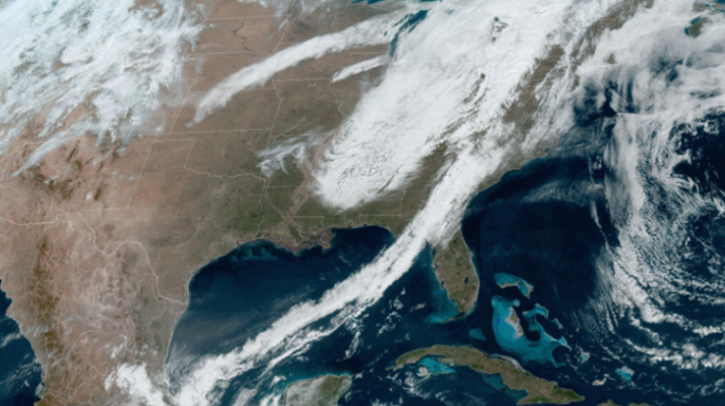The Weather Company has become the first operational user of the Joint Effort for Data Assimilation Integration (JEDI), a software tool developed at the Joint Center for Satellite Data Assimilation (JCSDA), which is housed at the University Corporation for Atmospheric Research (UCAR).
According to the partners, JEDI provides the highest-quality analysis of the current state of the atmosphere. This open-community software was seven years in the making. It reportedly integrates vast amounts of asynchronous observations from multiple sources – including radar, satellites, weather balloons, aircraft and weather stations – and turns them into a consistent format to be fed into forecast models with unprecedented efficiency and accuracy.
JEDI is developed, maintained and owned by the Joint Center for Satellite Data Assimilation (JCSDA), a research center based on a multi-agency partnership between NOAA, NASA and the US Navy and Air Force, with key collaborators including the UK Met Office and the US National Science Foundation National Center for Atmospheric Research (NSF NCAR).
“Weather doesn’t operate in silos, and neither should we,” said Thomas Auligné, the director of JCSDA. “This successful first commercial implementation of JEDI demonstrates how cross-sector collaboration can help bridge the gap between government and university research and operational forecasting, ultimately driving breakthrough innovations that benefit society as a whole.”
In an era where extreme weather events are increasingly affecting lives and economies, The Weather Company stated that its implementation of JEDI within its global high-resolution atmospheric forecasting system (GRAF) represents a significant step forward in weather prediction capabilities. Internal testing by The Weather Company indicated that forecast accuracy improvements of up to 15% are possible as its team continues to unlock the full potential of JEDI with advanced weather observations.
JEDI advantages
GRAF, developed in collaboration with NSF NCAR and based on the Model for Prediction Across Scales (MPAS), drives short-term forecasting for the day ahead. NSF NCAR also collaborated with The Weather Company on the operational implementation of JEDI, leveraging experience with MPAS and JEDI developed over several years.
JEDI is a highly flexible system that has already been adapted to a variety of weather models.
The assimilation of observational data into weather models enables improvement in day-ahead predictions and longer-term forecast accuracy, especially as developers continue to upgrade the system. JEDI also enables the assimilation of an expanded range of observational data, providing a more detailed view of the atmosphere. For example, The Weather Company can enhance its global high-resolution atmospheric forecasting system with data from specialized satellite instruments, rapid-update aircraft observations and mobile device pressure readings. The solution also enhances probabilistic forecasting by enabling ensemble modeling, or multiple forecast runs, thereby delivering more accurate predictions of weather’s uncertainty. This helps to see a range of potential outcomes that can be crucial for critical decision-making based on weather.
“As the first institution in the world to operationalize JEDI for weather forecasting, The Weather Company is not just implementing new technology – we’re revolutionizing how weather forecasting will be done in the future,” said Peter Neilley, the company’s senior vice president (SVP) of science and forecasting operations. “This advancement continues our commitment to innovate in weather forecasting technology while collaborating across the scientific community to solve global problems such as the increasingly disruptive impacts of weather.”
The crucial role of data assimilation
JEDI improves forecasts through its advanced approach to assimilating observational data into models. The partners pointed out that satellites and other instruments provide important snapshots of the atmosphere, but they cannot view all of it constantly and, therefore, leave wide gaps in time and space observations. A data assimilation system such as JEDI fills in those gaps with estimates of key atmospheric parameters such as temperature, wind and humidity.
They also asserted that a growing body of evidence shows that data assimilation is the most critical component of an accurate modeling system, and that the greatest gains in numerical weather prediction (NWP) skills over the past several decades have come from advances in data assimilation.
“We are very pleased that The Weather Company is adopting JEDI to strengthen its weather forecasting capabilities and better serve its customers,” commented Antonio Busalacchi, president of UCAR. “Today’s announcement illustrates the strength of the US weather enterprise, which relies on government and university researchers working with private forecasting companies to improve prediction for the benefit of all of society.”
In related news, the US Department of Commerce and NOAA recently announced US$6.6m in recommended funding to establish a multi-university data assimilation consortium to improve weather forecasts using enhanced numerical weather prediction systems. Click here to read the full story.



